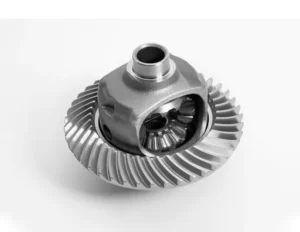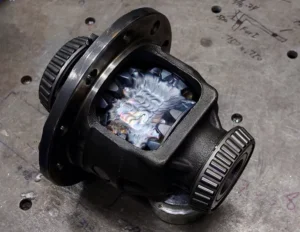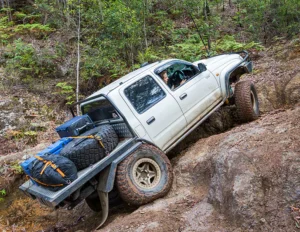Winter driving often presents challenges that test the capabilities of a vehicle. Snow, ice, and mud can significantly reduce traction, making it difficult to maintain control. A limited-slip differential (LSD) is a key technology designed to enhance traction under these conditions. But does a limited-slip differential really help in snow? Let’s explore how this technology works and its effectiveness in winter driving.

Understanding Limited Slip Differentials
A conventional differential divides the driving force equally between the two rear wheels, allowing them to rotate at different speeds, which is desirable during normal driving. However, this can become problematic on slippery surfaces. When one wheel loses traction (e.g., on ice or snow), it spins, and the vehicle loses driving force.
A limited-slip differential addresses this issue by directing more driving force to the wheel with better traction, thereby improving the vehicle’s mobility and ability to pull out of slippery situations. LSDs achieve this by using mechanisms, such as clutch assemblies or gears, to resist differential motion and ensure that more torque is transferred to the wheel with better traction.
Torsen Limited Slip Differential
The Torsen (Torque Sensing) LSD is a prime example of a highly effective limited-slip differential. Unlike the friction-type LSDs that use clutches, Torsen differentials use helical gears. When one wheel starts to lose traction, the gears automatically transfer more torque to the wheel with better traction. This process is smooth and instantaneous, providing continuous traction without the need for external control.
The Torsen LSD is particularly beneficial in winter conditions. If one wheel is on ice and the other on a dry surface, the Torsen mechanism will transfer more torque to the wheel on the dry surface, enhancing the vehicle’s ability to move forward. This automatic adjustment makes Torsen LSDs very effective in maintaining traction and control on slippery roads.
Operation
Limited-slip differentials, including Torsen LSDs, operate relatively simply. When one wheel begins to slip, the LSD mechanism engages to transfer torque to the wheel with better traction. This function is mostly automatic, requiring no special action from the driver, making it a reliable aid under adverse conditions.
For instance, if one wheel is on ice while the other is on dry pavement, the LSD will direct more power to the dry pavement wheel, increasing the vehicle’s ability to move forward. This feature is especially useful when driving on snow-covered roads or navigating through muddy areas.
Effectiveness in Snow
The effectiveness of an LSD in snow is often measured by the bias ratio, which is the ratio of torque that can be developed by the high-traction wheel compared to the low-traction wheel. A higher bias ratio indicates better traction. For example, a typical LSD might have a bias ratio of 2.5, meaning it can provide significantly more traction compared to a conventional differential, which has a bias ratio of 1.
One of the major advantages of an LSD, particularly a Torsen LSD, is its ability to maintain traction without requiring driver intervention. Whether starting from a stop or accelerating through a slippery turn, the LSD adjusts automatically to maximize traction. This is particularly useful when one wheel encounters ice while the other remains on a surface with better grip.
Practical Considerations
While LSDs are highly effective, they do have limitations. For instance, if both wheels are on extremely slippery surfaces, such as ice, the LSD might not prevent both wheels from slipping. Additionally, drivers need to be cautious when accelerating on slippery surfaces to avoid losing lateral stability and causing the vehicle to slide.
Proper maintenance is also crucial for the effective operation of an LSD. Using the correct lubricant specified by the manufacturer ensures the LSD functions smoothly and prevents noise issues.
Complementary Technologies
Limited-slip differentials work best when used in conjunction with other traction-enhancing technologies. For example, studded tires can increase traction on snow and ice, while an LSD allows the vehicle to make the most of that traction. Together, these technologies significantly improve safety and mobility during winter driving.
Conclusion
In summary, limited-slip differentials, especially Torsen LSDs, can significantly enhance a vehicle’s performance in snowy conditions by redistributing torque to the wheels with better traction. This automatic adjustment helps maintain control and mobility without requiring special driving techniques. However, drivers should be aware of their limitations and exercise caution to maximize their benefits. When combined with other traction aids, such as studded tires, LSDs become even more effective tools for conquering winter roads.



